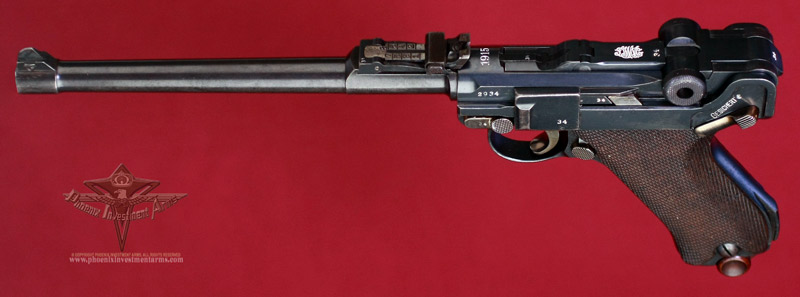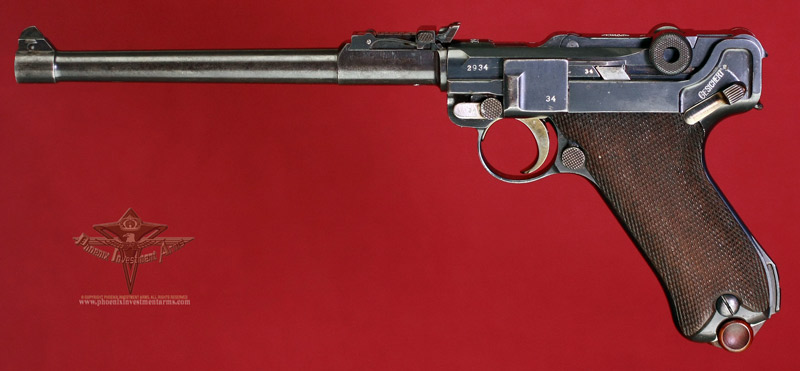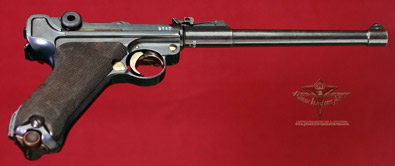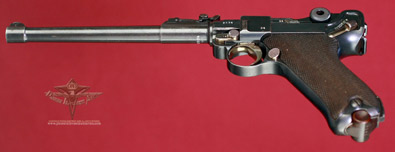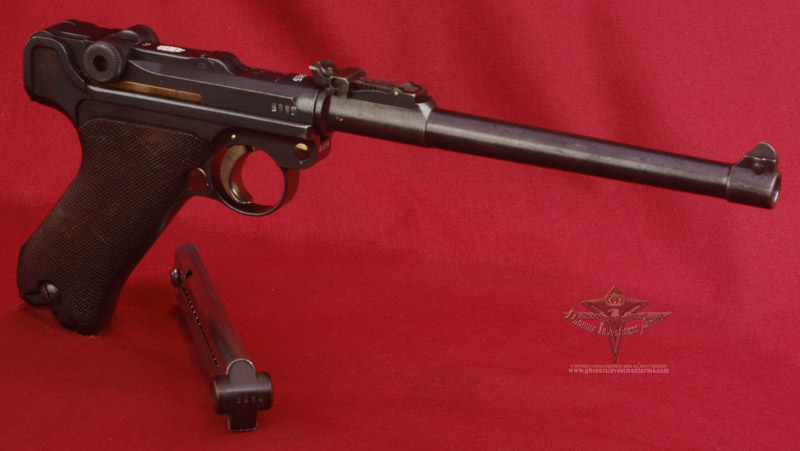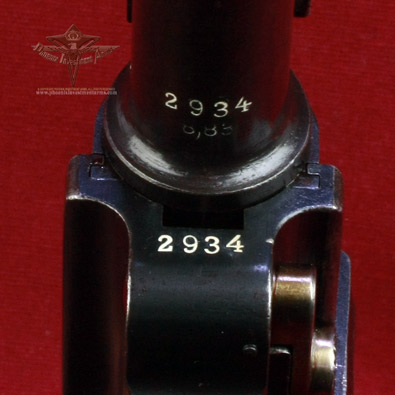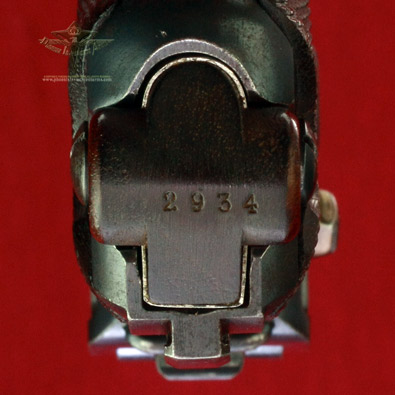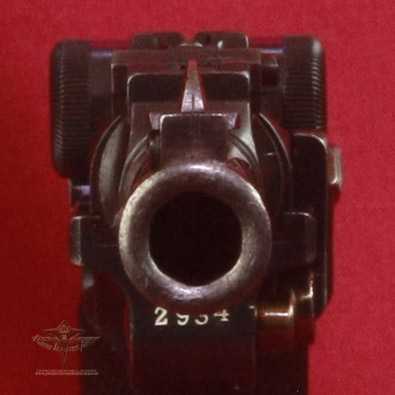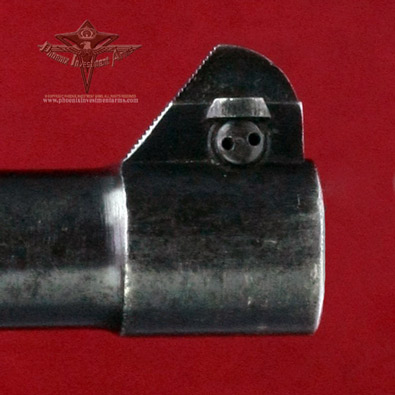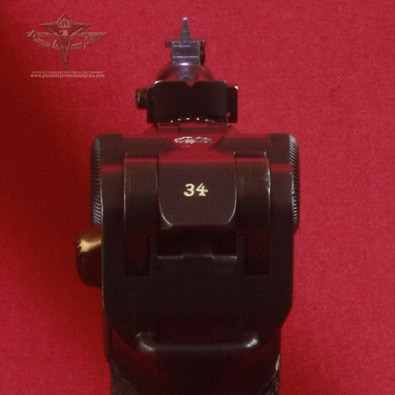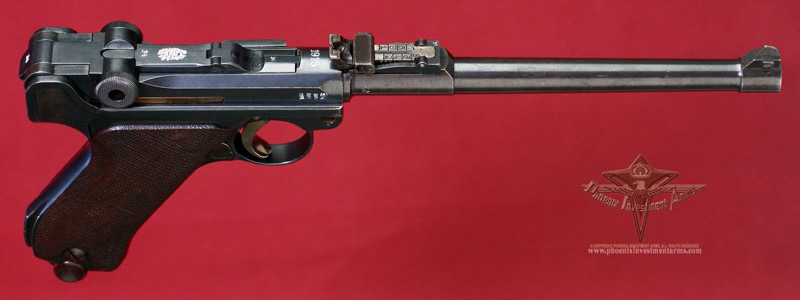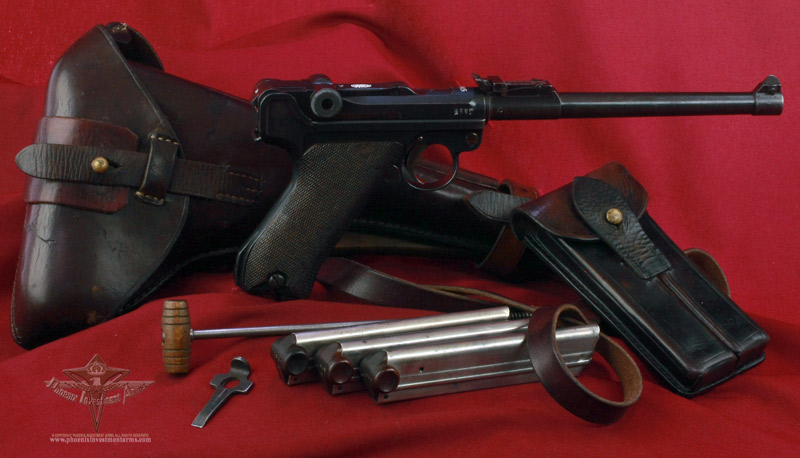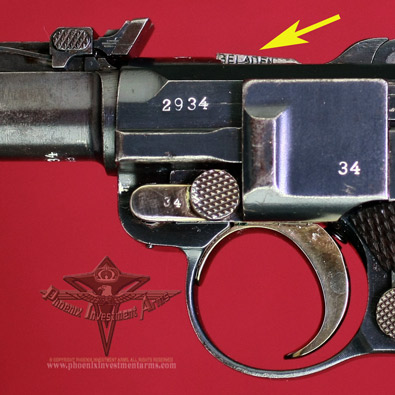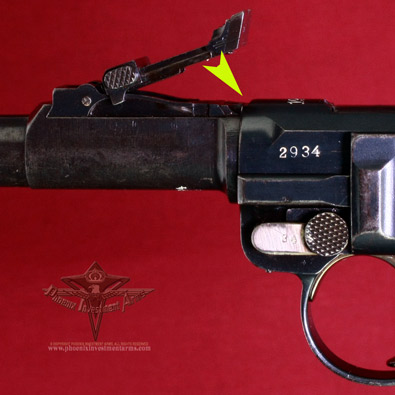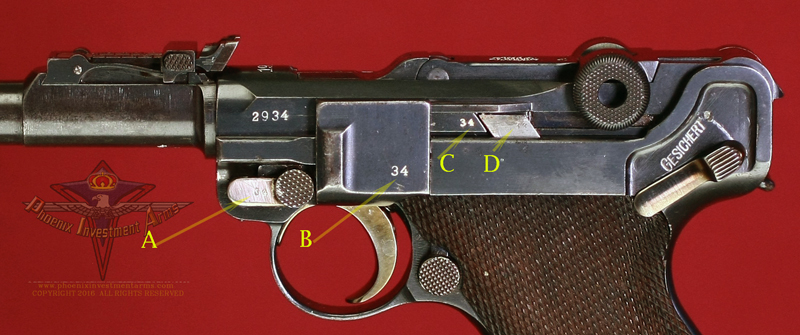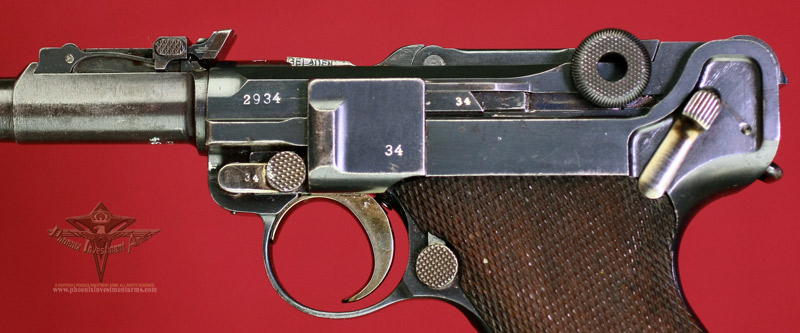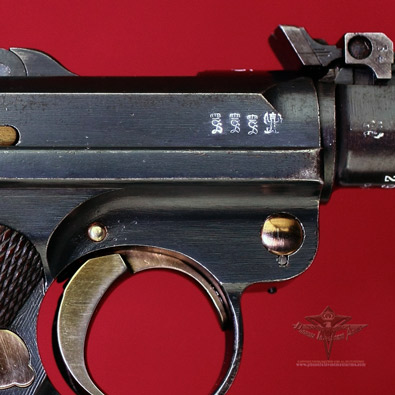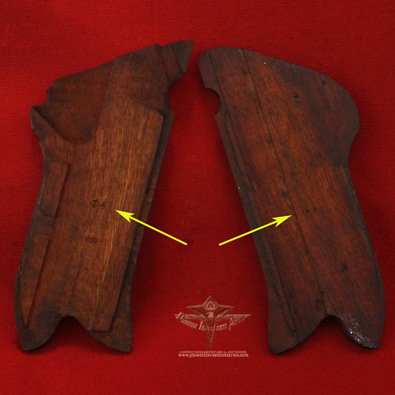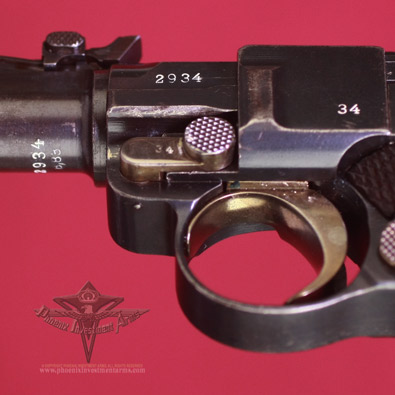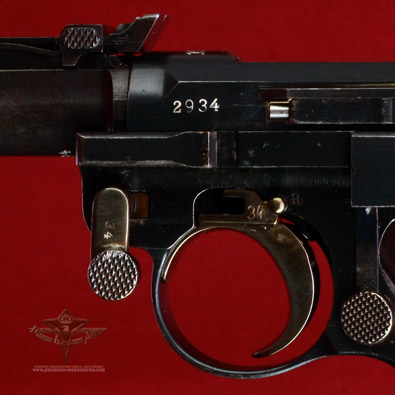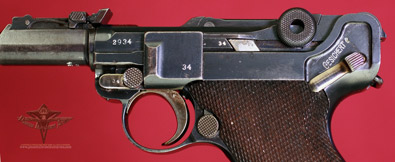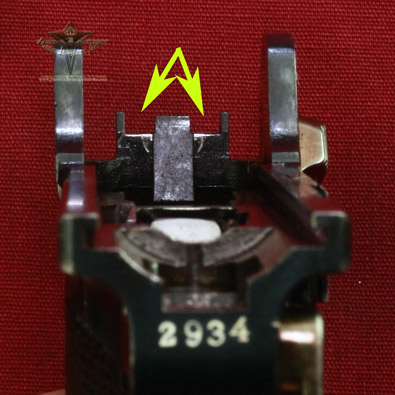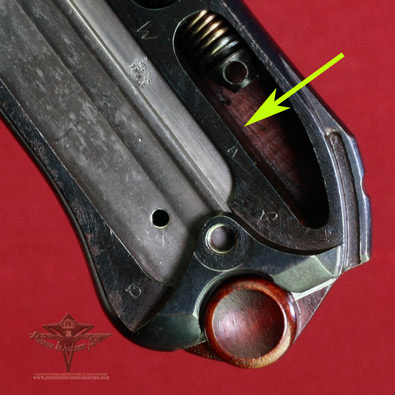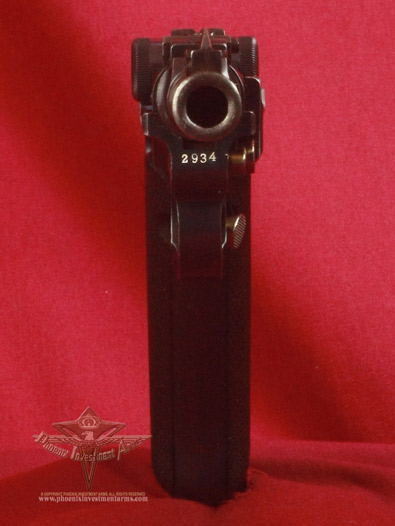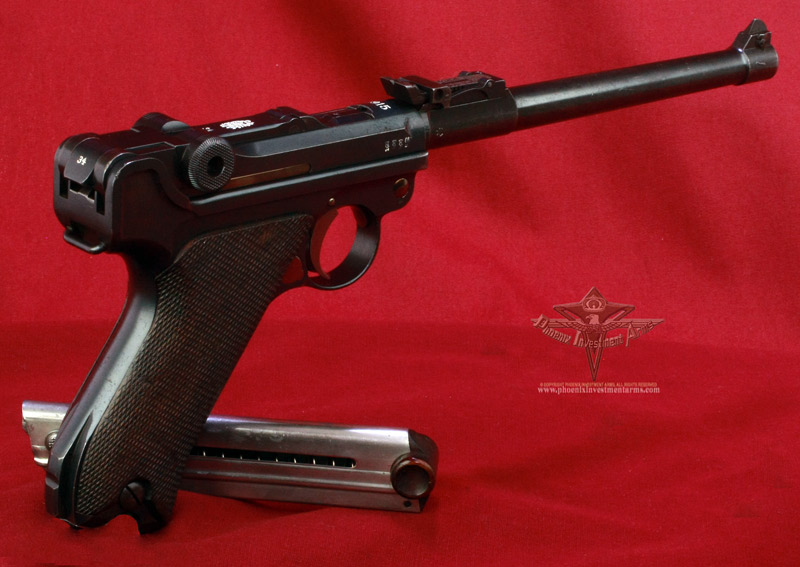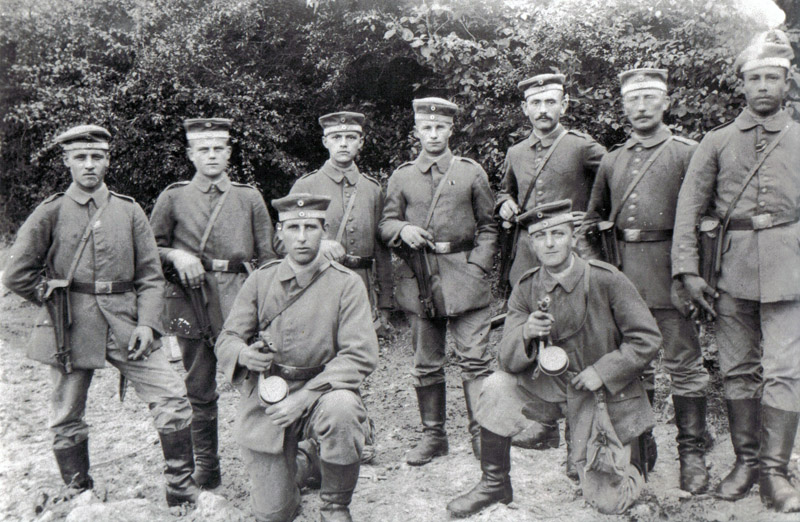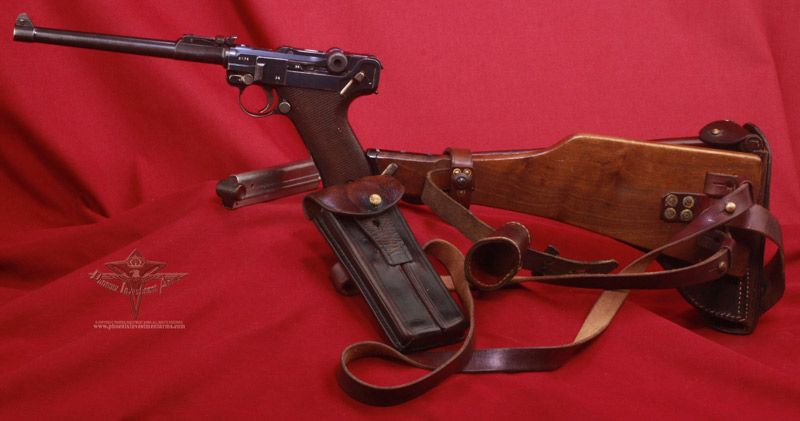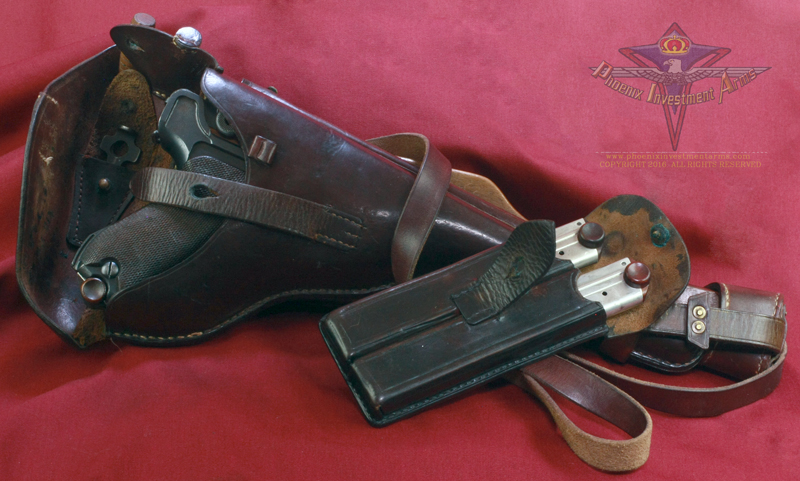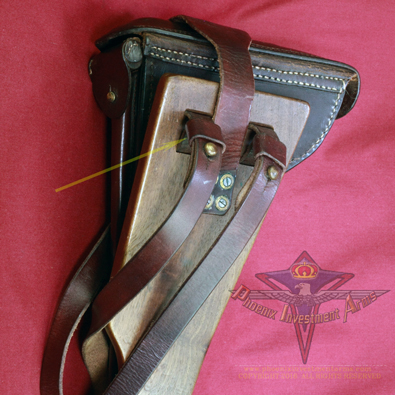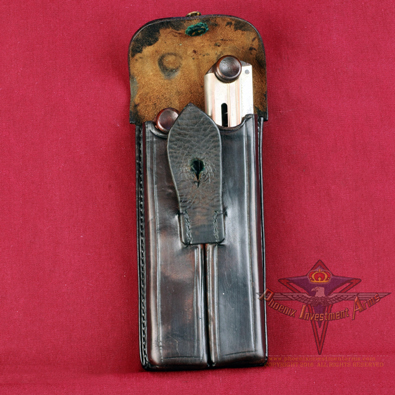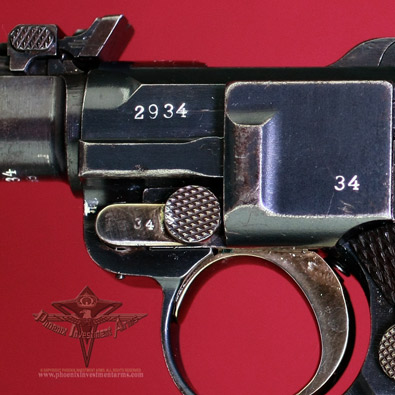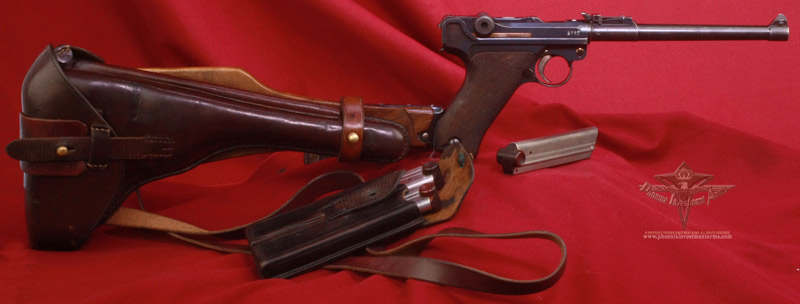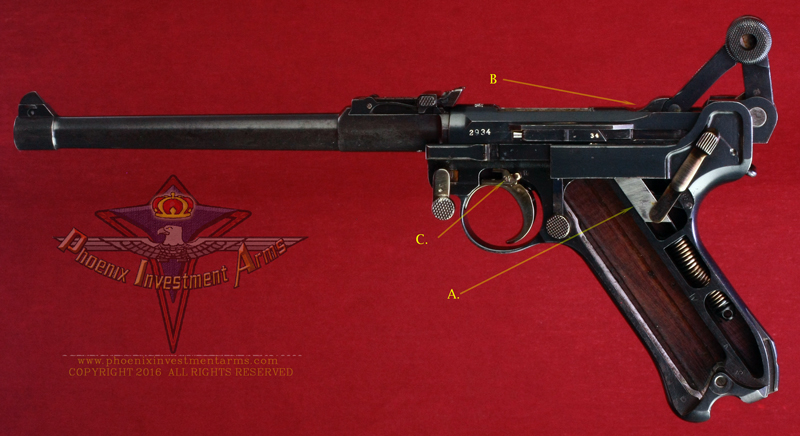 |
|
The inside of the gun is
clean and well cared for. (A) shows the long sear disabling the gun
being 'cocked' with the safety on; (B) the Imperial acceptance stamp;
(C) and the trigger serial numbered to the gun. The exterior shows honest wear on the
muzzle, barrel and high points on the sides. The barrel is shiny and shows
distinct lands and grooves.
This Luger shows characteristic holster wear on the side plate and front
exposed edges of the rails and end of the barrel. |
|
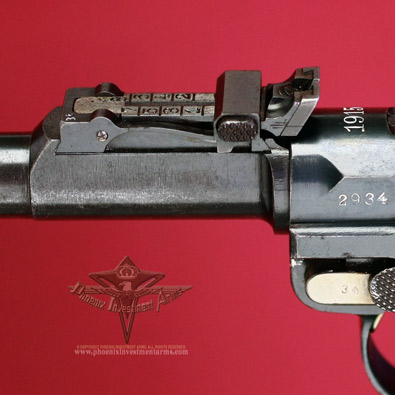
|
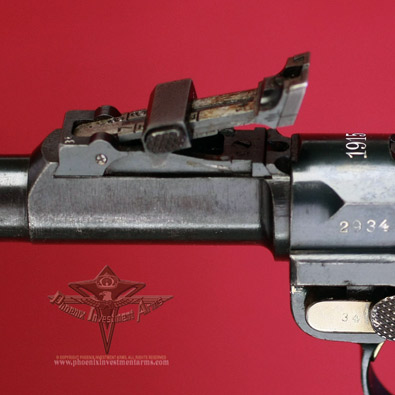 |
|
Above Left is the leaf sight that
is adjustable for elevation up to 800 meters and also windage. Along
with the adjustable front sight produced up through part of 1917 the
LP.08 was was designed as a precision weapon and with the extended
barrel and 800m rear sight making it formidable as a hand held
weapon. |
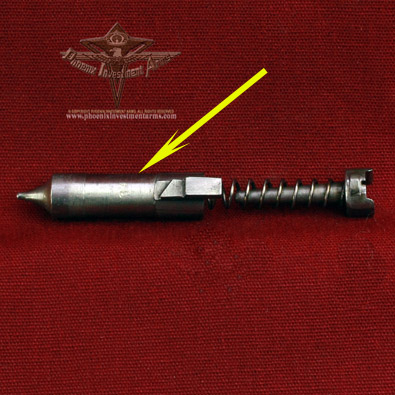 |
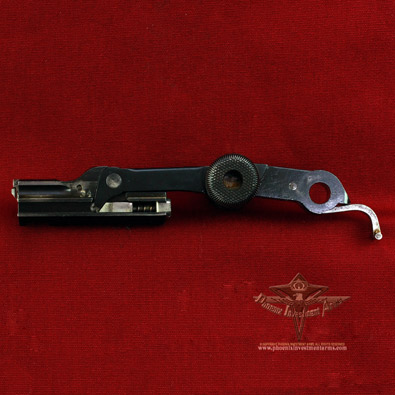 |
|
Above Left: The firing pin has
'34' the last two digits of the serial number. Above Right: The
breach block has the '34' and Imperial acceptance stamp . |
 |
|
This above "W" feature shown to
several advanced collectors could not produce any explanation as to
what or when. There are no import marks on the gun; it wasn't
brought in between the world wars. The general condition of
the gun doesn't lend itself to field use so it was speculated to be
a presentation or a production sample. The only "W" associated
with the order for the LP.08 was General von Wad el who served as
Deputy War Minister of the Kriegsministerium as recorded by the
Secret Memorandum dated Dec. 5, 1912. There is no known documentation
to support this connection. |
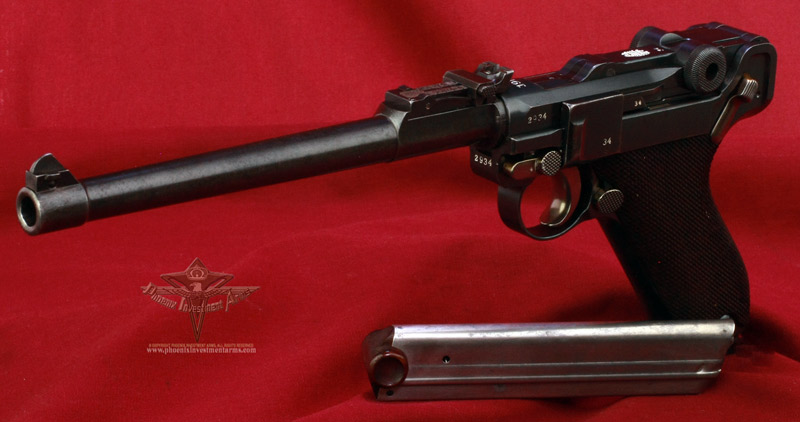 |
|
Rarely do we come across a 1915 Artillery in such good condition. Even the magazines had the ability to clean up to match the 101 years of aging. Our research over the years, tracing back the acquisition of these Lange Pistole is that they were captured from WWI Veterans that had become part of the Volksturm or the last ditch home guard. These old soldiers brought their weapons from home since at the end of the war new guns were only found on the dead. |
 |
Inside the holster you can see the various stamps from the Imperial Corps it was accepted and passed through and the date and cartouche. It appears that the initial issue was made to an individual whose serial number was written in the cover, The stitching is still the original color and shows us this holster is original, |
 |
The early leather color was brown as was all the belts, and accessories. This holster shows all the stitching to be white indicating the leather has never been stained or blackened to match the later change in uniform protocol. |
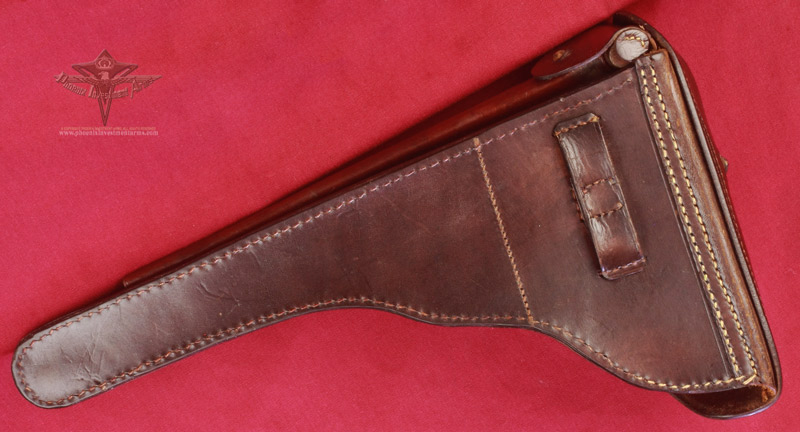 |
The back shows the tight stitching in the original color with the stock block in the center. You can also see the small 'ears' over the cover of the cleaning to rod on the top (front of holster).
|
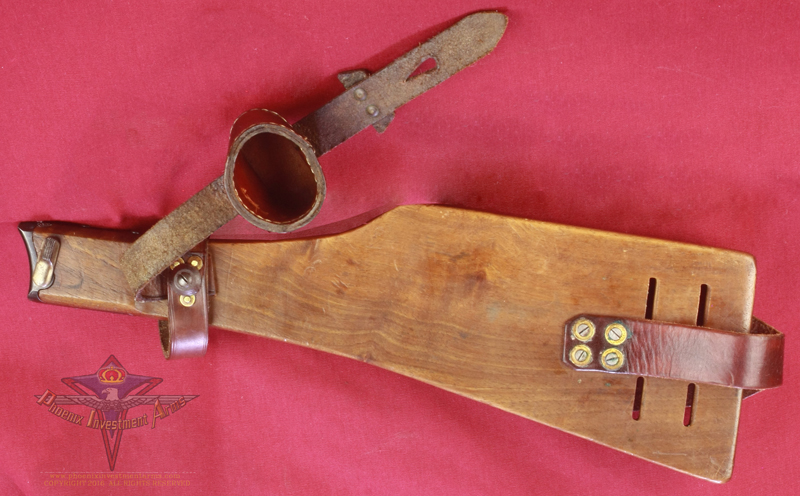 |
The inside of the stock cup is leather lined and the stops are still on the strap. This device was the protection for the end of the stock which used a thumb latch to attach to a detent on the pistol stock. The leather is the original and still subtle and clean. The screws have the brass grommets and the stock is in A-1 condition. |
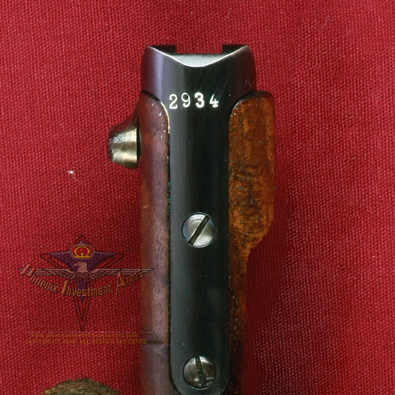 |
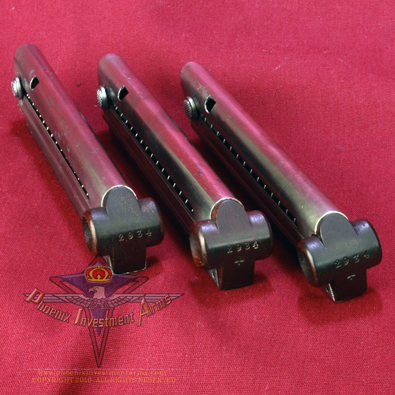 |
The matching serial number is present in the attachment iron and this makes the stock match the gun. Very rarely seen. When we got the magazines in the pouch they were covered with the green verdigris and cleaning with white vinegar & baking soda with a good polishing compound brought out the beauty in these matching magazines. |
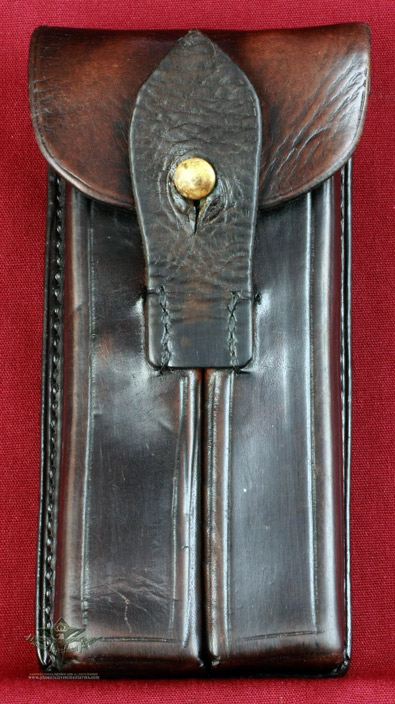 |
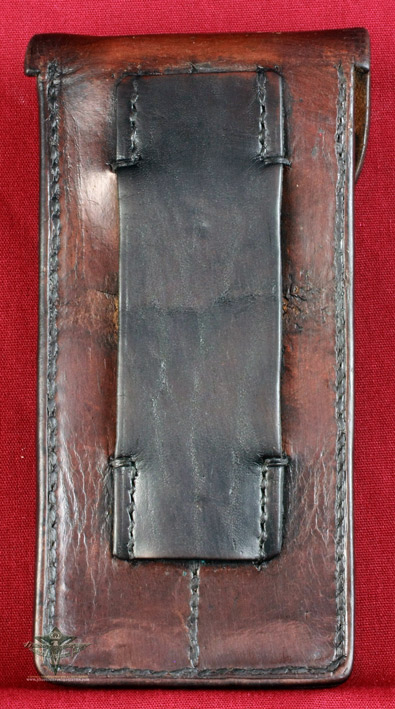 |
The double magazine pouch has the back loop sewn on so that the pouch can be worn on the belt (with the stitching restricting the belt width) and the gun strap can be placed north/south by the smaller loop to be carried over the shoulder. At some point this pouch was died or washed with black which was off on the back and high points. |
 |
This is an original turning swivel headed cleaning rod for the Lange Pistole. (Fits in holster pouch). |
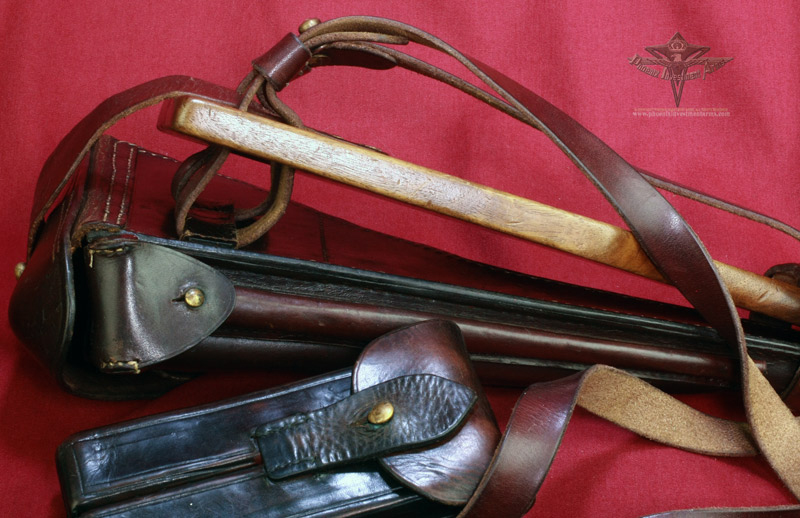 |
The above pictures illustrates how the straps are woven through the slots in the stock, through the stock block and back through the stock and through the keepers (rarely found on any artillery rig) to the brass connector knob. |
